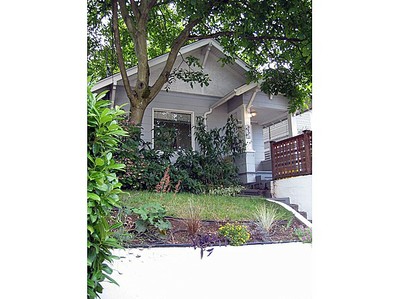 I wanted to make my leaky little Seattle bungalow more energy efficient. Really, I did. But my desire to lower my carbon footprint, save money and keep my toes warm in winter was overwhelmed by the same thicket of problems and misaligned incentives that keep many homeowners from doing the right thing.
I wanted to make my leaky little Seattle bungalow more energy efficient. Really, I did. But my desire to lower my carbon footprint, save money and keep my toes warm in winter was overwhelmed by the same thicket of problems and misaligned incentives that keep many homeowners from doing the right thing.
Fortunately, Seattle is the latest Northwest city to roll out a smart program making that process much easier. It will help home and business owners make improvements that save energy and money over the long haul, and create family-wage green-collar jobs needed to do the work. The Community Power Works program – which officially launched today – is now available to homeowners, apartment building owners and small businesses in Central and Southeast Seattle. It helps people choose the most cost-effective projects, connects them with pre-approved contractors, offers assurances that the work will be done correctly, lays out financing options, and allows the loans to be repaid on their electric bills.
To illustrate why that’s so important, here’s a brief description of my own energy efficiency odyssey:
Two years ago, I first called the conservation hotline when Seattle City Light was advertising rebates to replace electric baseboard heaters – an offer I was told might end in a few months. So I got quick bids from three contractors, who all gave me conflicting advice. And my attempts to vet these companies on my own did not produce much reliable intelligence about whether they’d do a good job or leave gaping holes in my walls.
I also knew the the city was planning to offer homeowners discounted energy audits (which would save me about $400). I wasn’t eager to rip out my heaters until I’d gotten a more thorough analysis of my home’s energy use and the fixes that would lower my electricity bills. But since the audit program wasn’t up and running yet, I got on the waiting list and stuffed the paperwork into my bookshelf, never to be seen again.
Last year, I did get that energy audit. But the total bill for adding insulation and sealing cracks and upgrading my heating system was many thousands of dollars. My family makes too much money to qualify for low-income weatherization programs but not enough to plunk down that much cash at one time. The city couldn’t point me to any energy-efficiency financing programs for middle-income homeowners. My auditor recommended I seek out a bank loan, which is about as high on my to-do list as getting crown work done or power washing my garage.
In short, it consumed a fair amount of my time and resulted in no energy savings at my house.
Seattle’s Community Power Works for Home follows Sightline’s recommendations to make the process much easier for homeowners (and is similar to ones in Oregon and Vancouver). They’ll have access to:
- An energy expert to set up appointments and guide them through the process.
- A deeply discounted home energy assessment (cost: $95) to determine which improvements will be most cost-effective.
- Bids from pre-approved contractors that bundle together all applicable energy efficiency rebates and incentives.
- Information about financing options.
- Affordable loans from Enterprise Cascadia, a non-profit community lender, which can be paid back on the home’s electric bill.
- A followup audit to make sure the work has been done correctly and that the energy savings are being realized.
Seattle also put a lot of thought into the program’s job creation aspects. All 13 contractors on the city’s approved list have been vetted according to a Community High Road agreement, which requires them to pay family-supporting wages, offer training opportunities for diverse job candidates and provide career pathways for their employees.
And from someone who’s been through the process, here are the things that Community Power Works offers that would have made a big difference in my interest and ability to upgrade my house:
First, simply being able to reliably reach someone on the phone who was familiar with my situation and could answer my questions would have been a huge help. Knowing that my contractor would be accountable for the work would have made me less nervous about choosing one and pulling the trigger. And finally, the ability to a) locate a lender without having to do legwork and b) pay the loan off through savings on my electric bill would have made the whole thing possible.
Selfishly, I’m sad that my neighborhood isn’t within the Community Power Works program boundaries. But with limited seed money coming through a $20 million American Recovery and Reinvestment Act grant, it makes sense to focus on Seattle neighborhoods with the greatest needs.
And for those of us who don’t live in the program’s initial target area, the city plans to add resources to the Community Power Works site that will help make the process more transparent. Maybe I’ll give it another try.
A celebration of Community Power Works for Home on May 3 at 6:30 p.m. at South Shore School, 8825 Rainier Ave. S., will offer food, children’s activities and information on affordable ways to increase the energy efficiency of people’s homes.

Comments are closed.